How did film Laal Kabootar manage to represent Karachi so authentically?
It is very rare for Karachiites to have the privilege of consuming a representation of their politicised existence on screen.
And by that I don’t mean a gimmicky performance of violence and pain that translates day to day experiences in Karachi for those who don’t understand them. I’m talking about a Karachi story, for Karachi folks: a story that is politicised by the very act of being told.
Also read: In Laal Kabootar we finally have a movie that equals Karachi's chaos and glory
Laal Kabootar is one such story – it brings Karachi to life on the screen in a way which feels familiar and comforting, but also jarring and uneasy, all at the same time.
Watching the film, pushed to the edge of my seat by a particularly tense, violent action sequence unfolding inside a private beach hut (does it get more Karachi than that?), I couldn’t help but question, what goes into producing Karachi for the screen? Who are the people producing this depiction? What is their politics? How did they go about crafting a story that is so visceral in the reality it depicts? And how is their depiction of Karachi going to influence stories that follow?

And so, on a Sunday afternoon, I got together with the makers of the film — the writer, the director of photography, the music director, the assistant director, the sound recorder and the director to unpack the process, context and implications of producing Karachi for the screen (and I was joined by the awesome Ahmer Naqvi, who conducted the interviews with me).
But before that, for context — Laal Kabootar follows the story of Aliya Malik, played by Mansha Pasha, who investigates and seeks revenge for the target killing of her journalist husband, after he loses his life to a dangerous story exposing a powerful land mafia. She decides to take matters in her own hands after repeatedly butting heads with Inspector Ibrahim, a corrupt policeman, and partners up with her Careem captain for an attempt at vigilante justice. Careem captain Adeel, played by Ahmed Ali Akbar, is desperately seeking an escape to Dubai from a life of petty crime and overwhelming listlessness which is threatening to consume him.
The screenplay
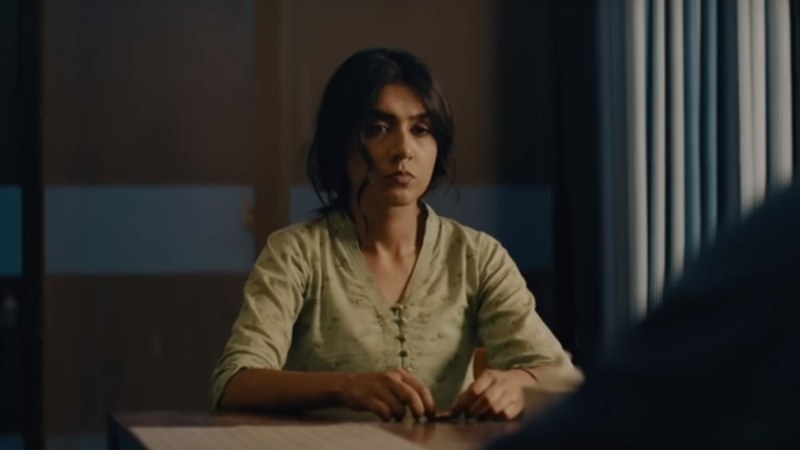
None of the characters are particularly likeable, and even when their motives are easy to empathise with, their actions are most often not. And yet the magic in the story lies in the way it unfolds – you stay hooked not because you find yourself rooting for a particular character, but because you want to know how they survive – each other, and the city that binds them. So how did this story come to be?
In conversation with screenwriter Ali Abbas, I learned that he was not the first to get his hands dirty with the screenplay - the story was passed from hand to hand, from Lahore based producers Hania and Kamil Cheema to the hands of screen writer Hamza Bangash, to finally Ali Abbas who was occupied with his own film and produced a draft within four nights, to a bunch of consultants, and finally back to Ali Abbas again.
The task at hand was to tell a ‘Karachi story’ and each version was redrafted when it did not feel ‘Karachi’ enough. Screenwriter Ali Abbas described his process of telling a Karachi story – highlighting certain key elements that shaped the way he has thought of and engaged with Karachi in recent years: street crime, target killings, Careem Captains.
The fact that one of the main characters is a Careem captain who also happens to occasionally engage in street crime to get by ensures that the vast majority of the story unfolds on the streets of Karachi.
While those may appear to be oversimplifications of Karachi as thematic choices, a closer look reveals them to be brilliant narrative building tools for a ‘Karachi story.’
The story is framed by a target killing, and one of the main characters is a Careem captain who also happens to occasionally engage in street crime to get by – this ensures that the vast majority of the story unfolds on the streets of Karachi and so the audience gets to engage with a diverse range of characters with a diverse set of experiences.
The plot is pushed forward by the politics on the street, the interactions that take place between characters as they butt heads on the streets – as they rob, kill, run, hide and survive their everyday on the streets of Karachi.
Ali Abbas shared with me that he feels Careem Captains make for interesting characters for the screen because they end up meeting a diverse set of people themselves. Through Adeel’s car rides we meet varying faces of Karachi: from tinder-loving teenage boys to avenging, badass women. And the little red Careem itself, which many see as the ‘Laal Kabootar’ from the film’s title, serves as the vehicle which drives audiences through the maddening bustle that is Karachi.
Ali Abbas’s strength as a writer lies in his ability to craft a visual narrative – while the dialogue feels authentic, it is not used as the sole narrative building tool. In fact, it only serves to complement the evocative visual storytelling.
For instance, Inspector Ibrahim, a corrupt opportunist at work, and a tender father and husband at home, watches his two worlds collide as his house is gunned down by a mafia he attempted to blackmail for money – minutes before the violence breaks out his daughter is painting his face with makeup, and minutes later, he finds himself holding her limp, lifeless body, his face covered in her makeup, her hair clip hanging from his rough hair. As he avenges her death on a testosterone fueled killing spree, the makeup stays on his face. No dialogue could captured the deeply layered meaning conveyed through those visuals.
The visuals that bring the story to life

Of course, the magic isn’t happening in the writing alone. The direction and cinematography play a large hand in making Laal Kabootar a cinematic delight.
Mo Azmi, the Director of Photography, who now has two industry-defining cinematic gems under his belt – Cake and Laal Kabootar – brings a jarring, visceral quality to the visual framing of this ‘Karachi story’.
It is always interesting to observe how a privileged storyteller crafts a tale that explores far less privileged realities, especially in the context of our industry, housed in a society where film is not seen as a viable and sustainable career choice by many, and gatekeepers are keen on talent emerging from higher income groups – successful storytellers end up being those with inherited privilege, and as they tell stories that are removed from their worlds, objectification becomes an easy pitfall.
In Laal Kabootarthere are barely any ‘poverty shots’ – the camera follows the characters in the spaces that they occupy, instead of building commentary on the spaces themselves.
In conversation with Mo Azmi, it’s difficult to miss that he doesn’t belong in the world he has brought to life in Laal Kabootar, but his honesty, thoughtfulness and self-awareness regarding that very privilege make him a story teller to look out for.
What really stood about the visual portrayal of Karachi in Laal Kabootar was that there was barely any aestheticisation of poverty. Unlike Cake, which explores the lived realities in the privileged parts of Karachi and Sindh, Laal Kabootar engages with a more diverse set of realities, even though they are often rooted in similar experiences.
Alcohol consumption, for instance, is shown to exist across the class spectrum – housed in different spaces, with different consequences, and different utilities. Those spaces, however, are all visually framed in the same way, with a variation of extreme close ups and wide shots – the camera closes up and tightens around characters, and the lens loosens and widens to capture space.
The effect of this narrative strategy is that the audience begins to associate a sense of suffocation and entrapment with each character, irrespective of the space they occupy. There are also barely any ‘poverty shots’ – the camera follows the characters in the spaces that they occupy, instead of building commentary on the spaces themselves.
Mo Azmi described to me how the team spent extensive amounts of time in the locations they shot in before the filming process began. The objective was an attempt at understanding context as much as possible by building relationships with the communities who were lending their homes for the filming process.
Mo Azmi explained to me how him and director Kamal Khan came up with a word to describe what they wanted the audience to feel in each scene. ‘Discomfort’ is one word that stood out, and that perhaps goes to explain the jarring quality of the visual framing.
Assistant Director Zoobia Anwar shared that the narrative ended up being heavily influenced by these visits – the filmmakers built authenticity by including anecdotal observations into that narrative itself, instead of super imposing their own perceptions of the communities into the film.

The idea of studying communities and building relationships with them in order to produce a film is an uncomfortable one – it raises important questions about representation and privilege for our industry going forward.
While the homes used for the production of Laal Kabootar were all rented, and homeowners were monetarily compensated, invited to screenings – I’m left wondering what the cost of building temporary relationships with communities for representational purposes is.
That being said, however, if filmmakers are expected to only create what they know, representation in the industry will become extremely skewed towards depictions of the realities of those with extreme privilege. What perhaps sets Laal Kabootar apart is the fact that everyone on set contributed to the story – narrative suggestions made by the cast and the crew were all incorporated in the story, ensuring that the storytelling process was as democratic and inclusive as possible. And the conversations were not just limited to the story, everybody was sharing their own experiences of Karachi itself.
The film also did not have blatantly commercial intents. Mo Azmi described it as ‘art for the sake of art’ sharing that one of the terms in his contract is always that he will be in charge of any ‘impure’, ‘monetary driven’ aspect of the film which could include product placements, lip syncs, song sequences. He also pointed out that the story does not have a markedly commercial appeal in the same way that its industry competitors do, and that it is important to be cognisant of that reality – the industry can only survive if both types of stories are told.
What stands out most about Azmi’s process as a filmmaker, is the thought he puts into the experience of the audience, while crafting the visuals. He explained to me how him and director Kamal Khan sat and came up with a word to describe what they wanted the audience to feel in each scene. ‘Discomfort’ is one word that stood out, and that perhaps goes to explain the jarring quality of the visual framing.
What does Karachi sound like?
This focus on audience ‘feel’ was a big part of the music direction as well. Taha Malik, the music director, described Karachi to be ‘pretty hip hop’, comparing it to cities like New York when describing his process of creating music that captures the spirit of the city. There is an undeniably ‘cool’ yet traditional feel to the sound track in the film, largely due to experiments like auto tuned Mai Dhai songs. The upbeat-y timbre of the music, helps with the beats and the pacing of the narrative itself.
There was a concentrated effort made to capture a diversity of sounds and have music that was inclusive and representative of the diverse ethnic and linguistic makeup of the city.
Good sound recording, according to Faiz, ensures that only sounds emitting from subjects in frame, on screen, are captured – when audiences hear things they can’t see, it takes them out of the experience.
The sound recording, done by Faiz Zaidi, also has a big hand to play in the film’s efforts to aurally capture the spirit of Karachi. He described how he’d often just record random clips of thelay-walla’s on the street, or dhol walas and send them to the director and to Taha, to incorporate into the film somehow.

Perhaps the most interesting realisation for me during the conversation was how sound recording in films being produced by the industry isn’t given the kind of importance it should be – with Faiz Zaidi sharing that almost 90% of the films produced end up being dubbed at a later stage in the production process because the sound isn’t clean, and so the characters, months after filming have to come back and re-record the dialogue in the studio.
Capturing clean and clear dialogue on the streets of Karachi seems like an impossible feat, and yet Faiz Zaidi has managed to do it for Laal Kabootar somehow – he pins it down to an effective pre-production process, in which sound is constantly taken into consideration during location scouting. He shared that even during the filming process itself, an effort would be made to film at quieter times. Good sound recording, according to Faiz, ensures that only sounds emitting from subjects in frame, on screen, are captured – when audiences hear things they can’t see, it takes them out of the experience.
In the end, everything matters

Laal Kabootar’s success seems to lie in the extensive thought that was put into the craft, and not just in terms of story – Zoobia shared how an effort was made to make sure women were represented in the crew (although more female representation on the screen would have been great as well), and the work didn’t stop there, efforts were also made to ensure that those women felt safe and basic utilities such as bathrooms were always available, irrespective of the location of the day.
I am hoping this sets a few precedents in the industry - to include women in all parts of the process, and to think carefully, and deeply about what the audience is supposed to feel during the film and what meaning they’re supposed to gain.
Perhaps the only thing I was left wanting at the end of the film, was the space to be more invested in the characters.
Mo Azmi and Zoobia explained how the genre specifications made it such that stylistic choices had to be made with the story, and so the plot was carefully balanced with emotional narratives, with neither getting more space than the other. That hunger though, for the space to be more emotionally invested in characters that occupy a world that looks like the city I wake up to every morning, is perhaps indicative of my own deprivation.
Here’s hoping that more ‘Karachi stories’ for the screen follow, an excellent precedent, in the shape of 'Laal Kabootar’, has been set for them.


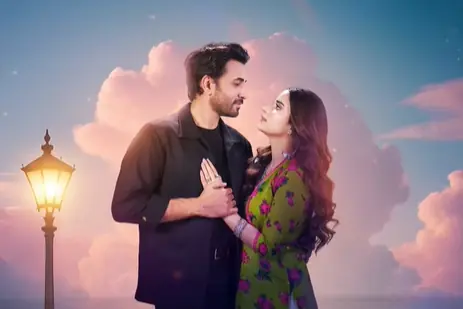
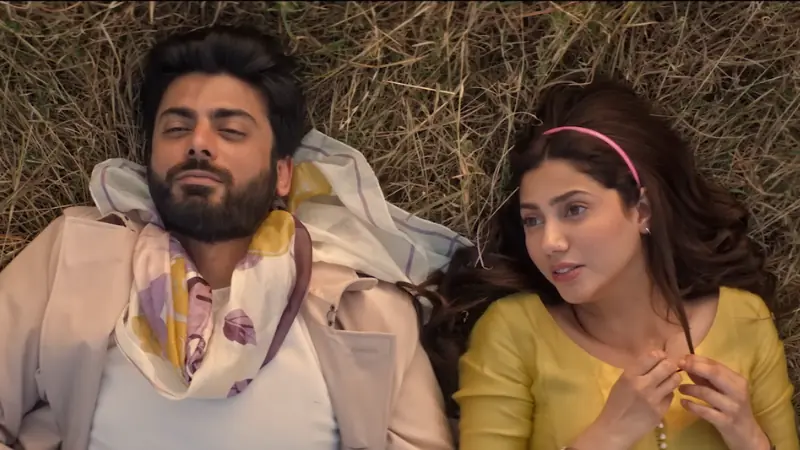
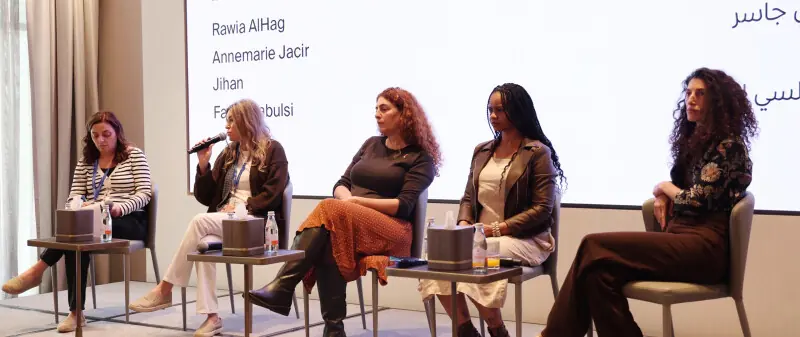


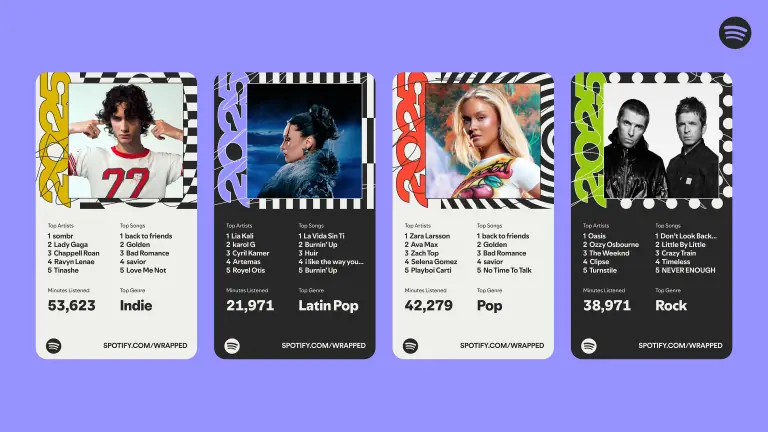



Comments